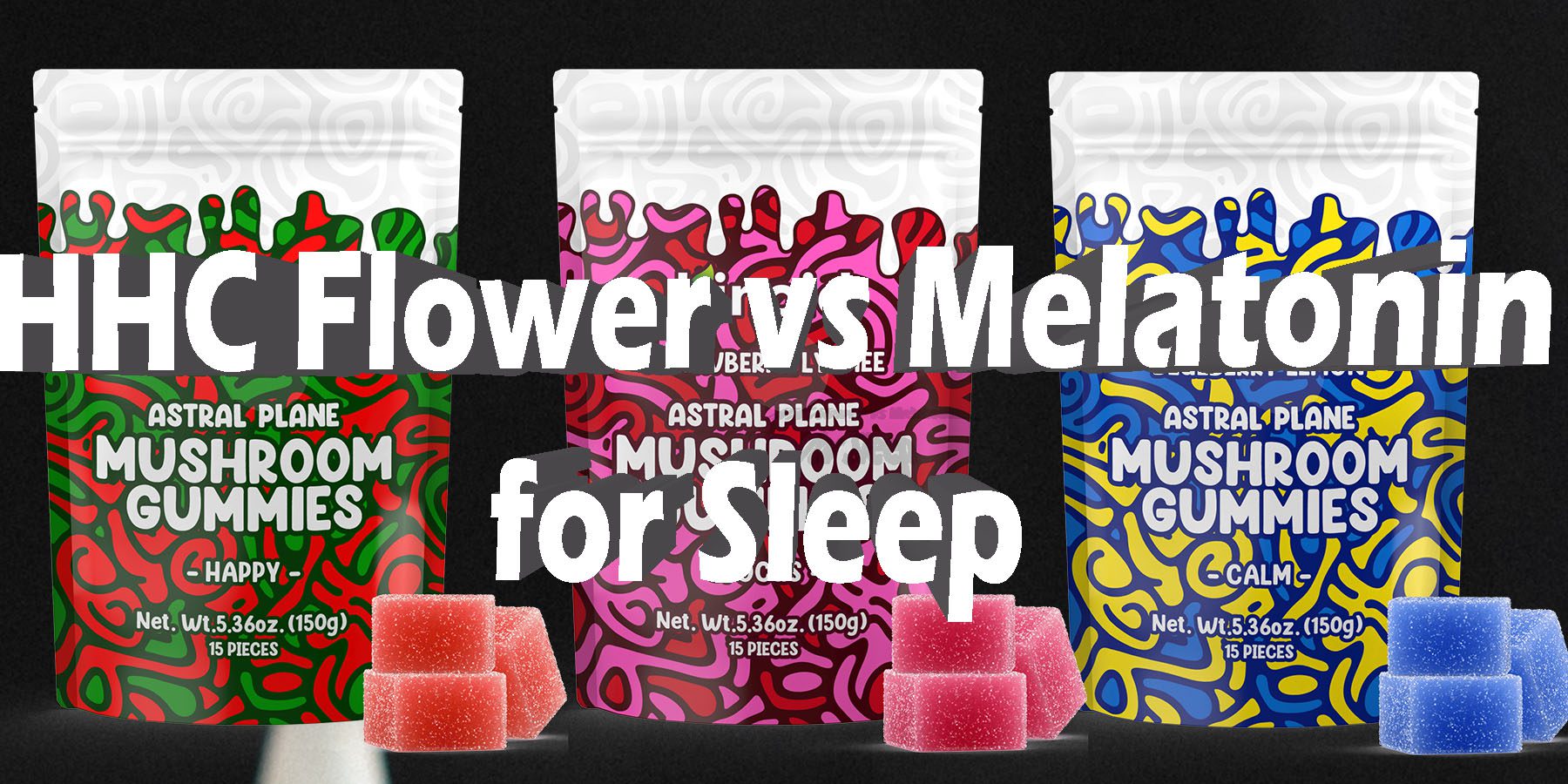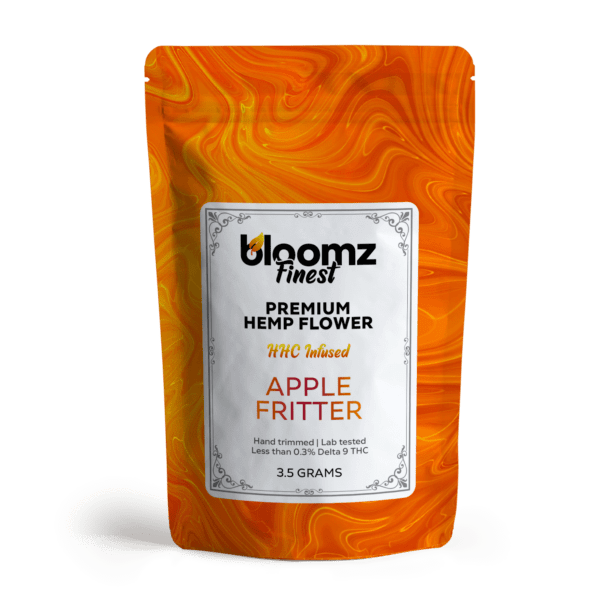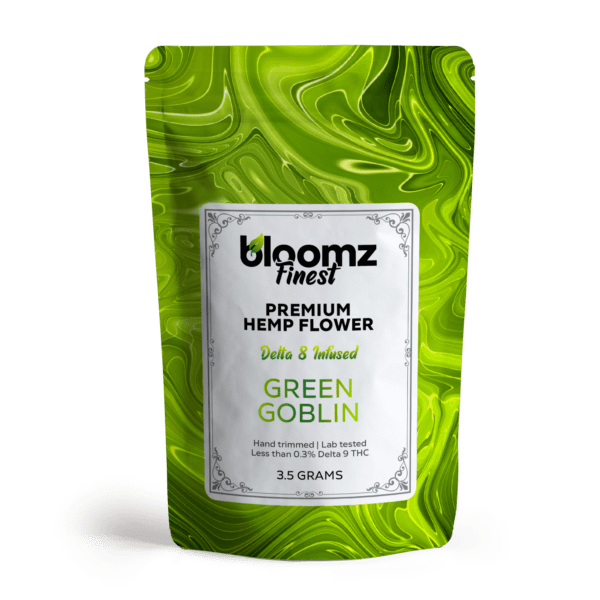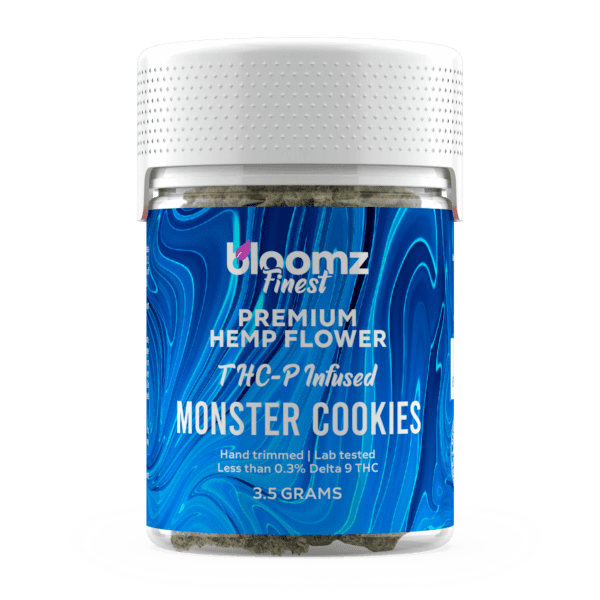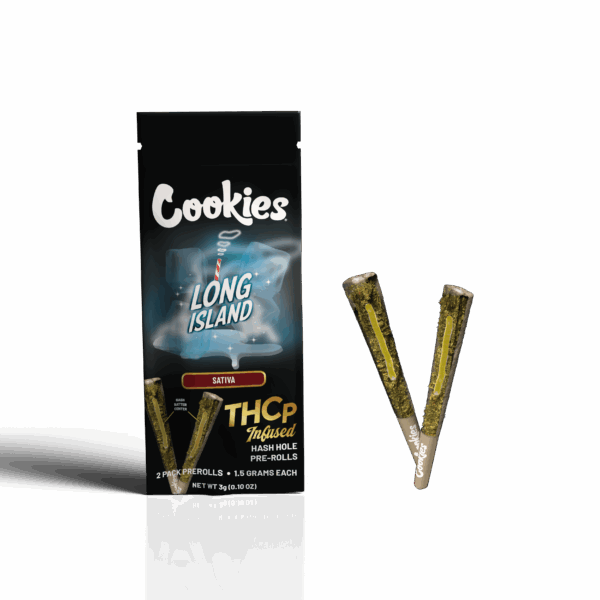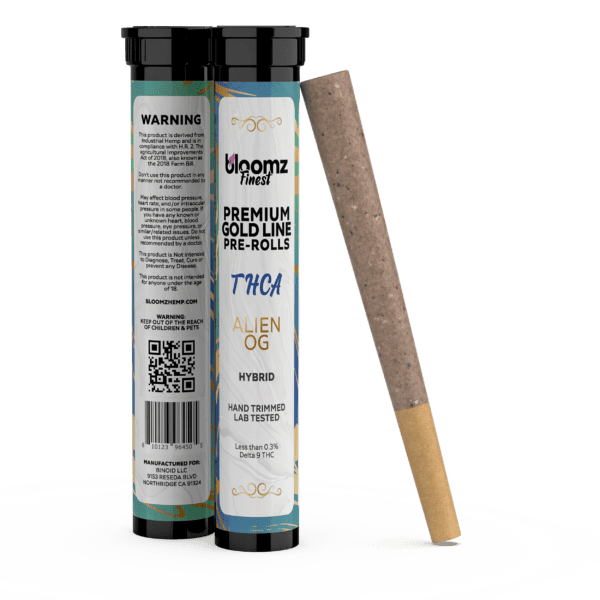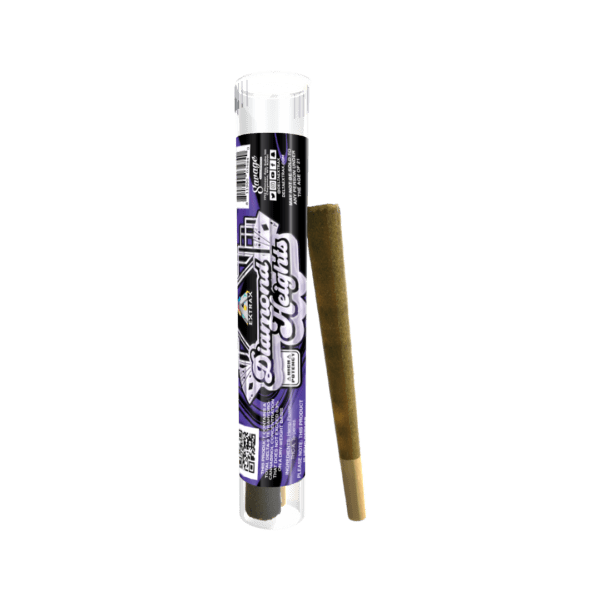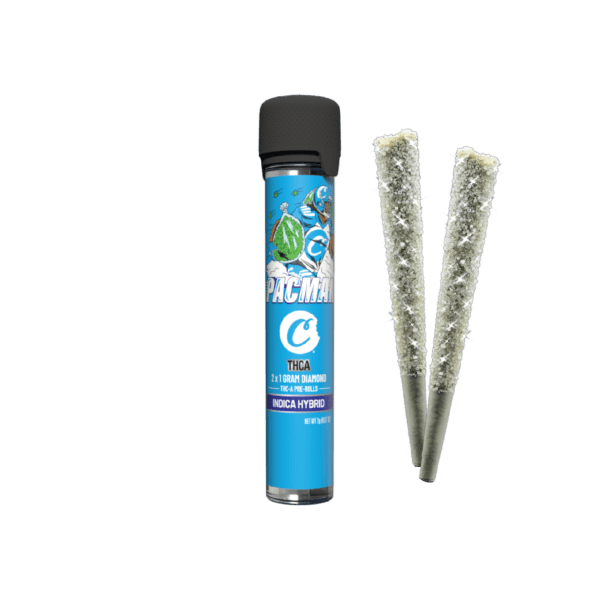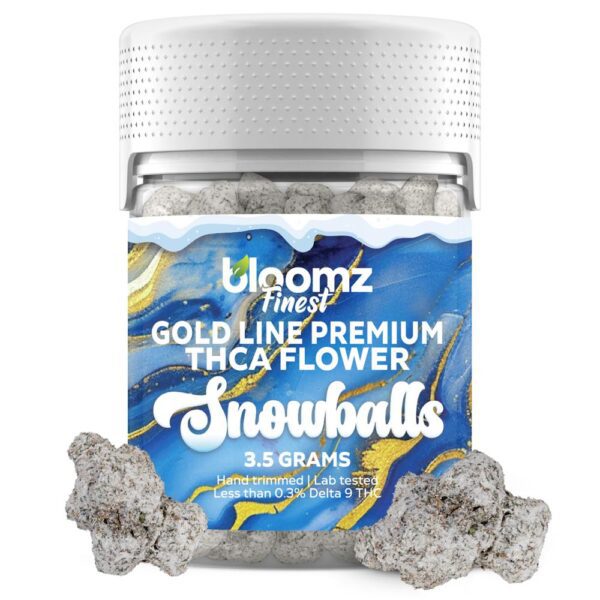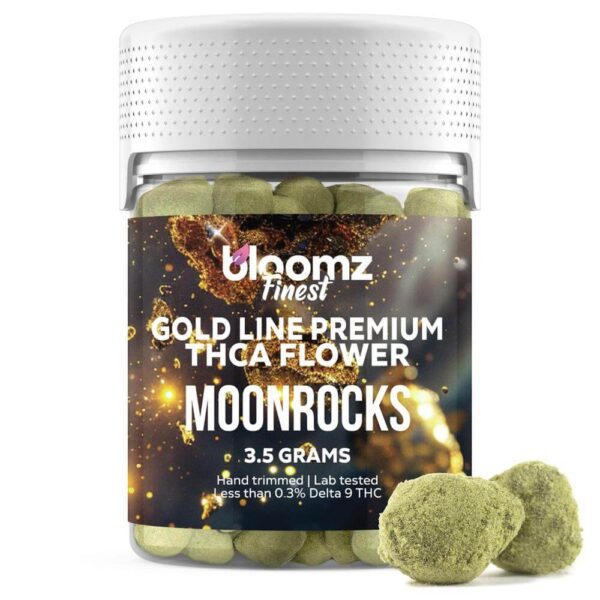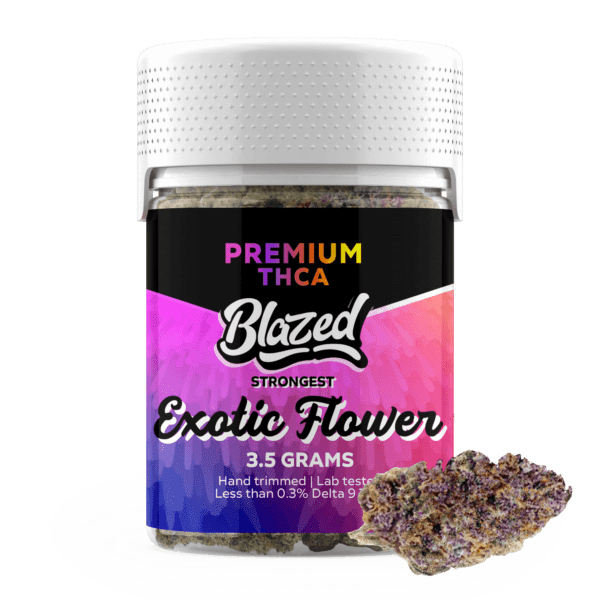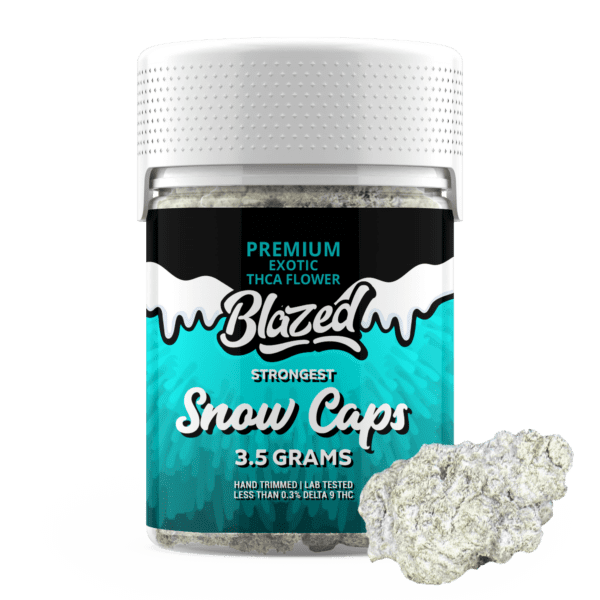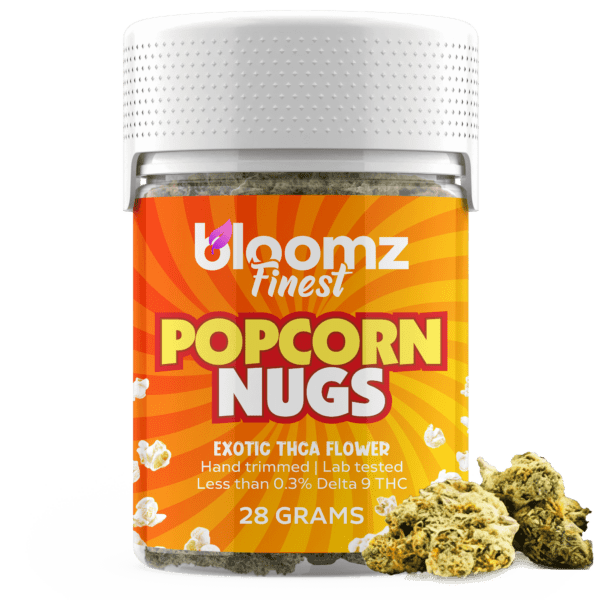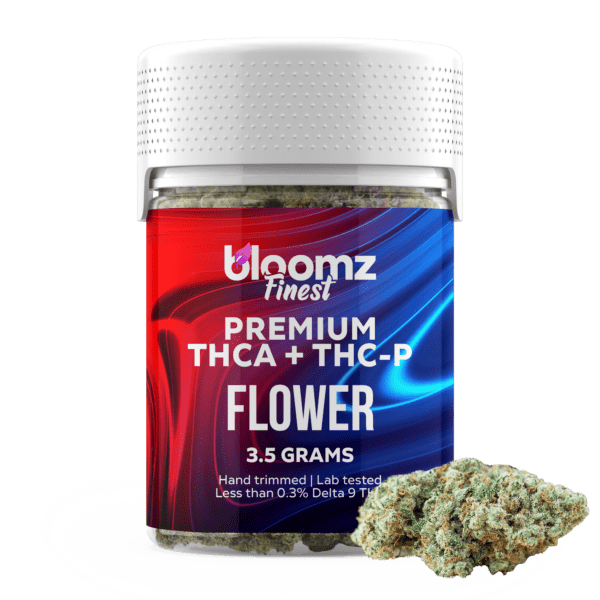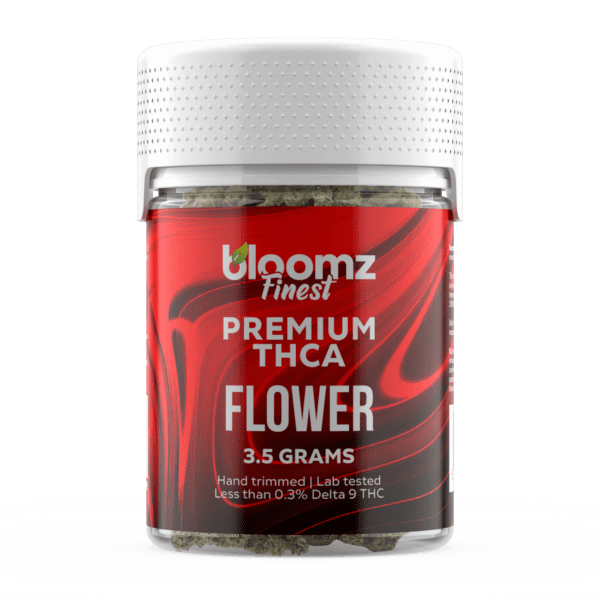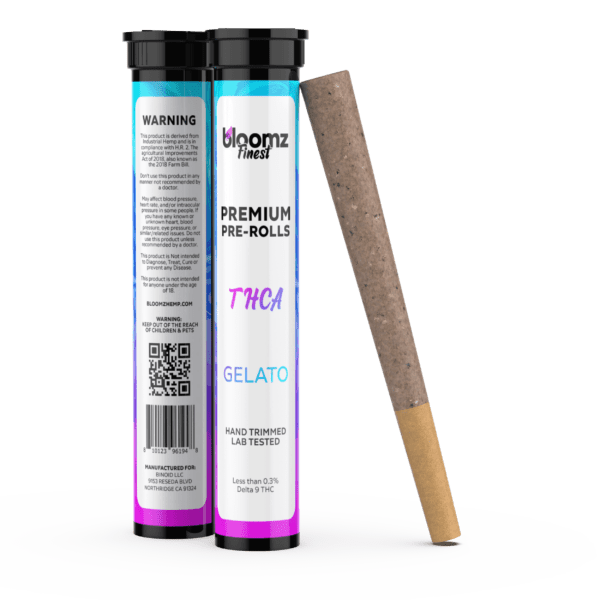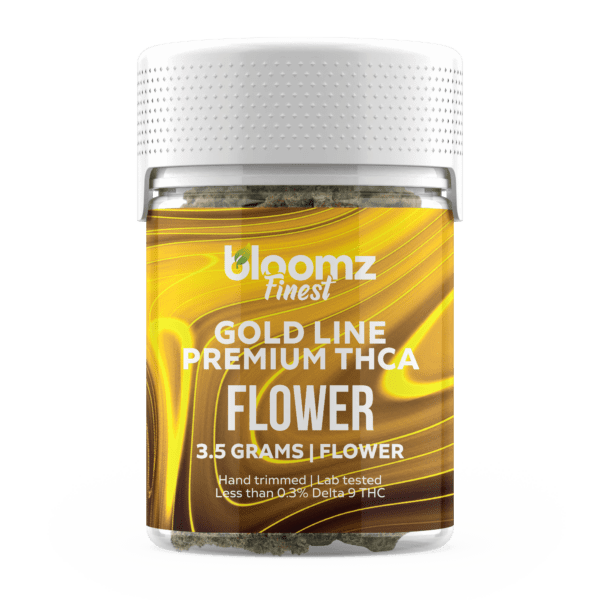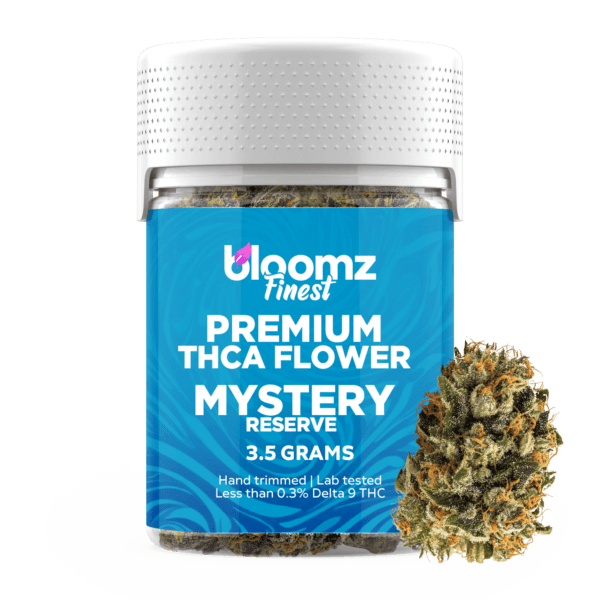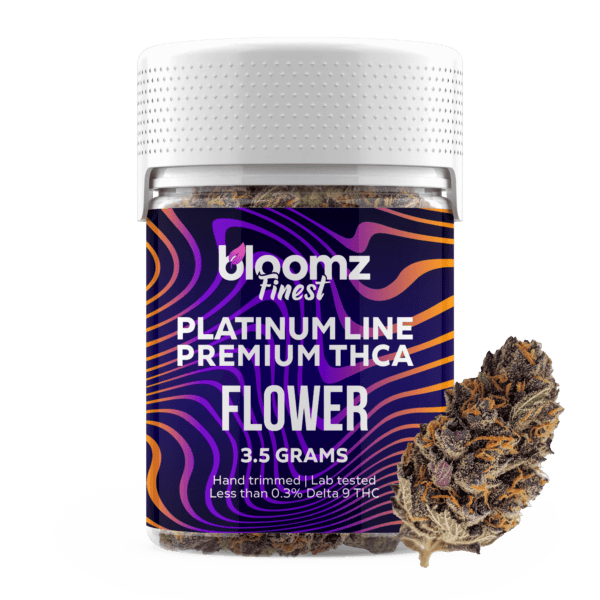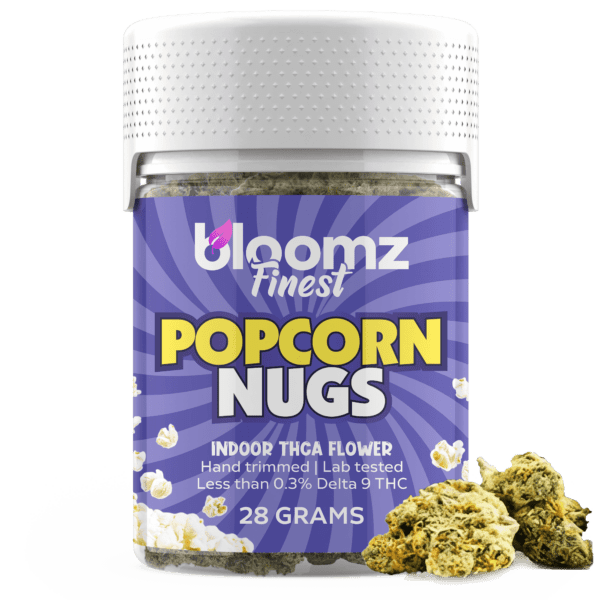As the vibrant energy of the day gracefully gives way to the tranquil hush of the evening, a collective human impulse takes center stage: the search for profound and restorative rest. The often-challenging transition from a state of high alert and constant engagement to one of serene personal calm can feel like navigating an intricate and unfamiliar landscape. In this timeless quest for a peaceful night, individuals from all walks of life are continuously exploring a diverse array of options designed to help them unwind, decompress, and ultimately prepare their minds and bodies for the deep, uninterrupted sleep they need.
This exploration has brought two very different, yet equally compelling, contenders into the spotlight: HHC flower, a novel and unique cannabinoid derived from the hemp plant that offers a blissful and functional psychoactive experience, and melatonin, the body’s own gentle, innate hormonal signal designed to methodically usher in the natural sleep cycle. It is a fascinating and highly relevant comparison between a unique botanical experience and a foundational bodily hormone, each offering a distinct and valuable approach to achieving that cherished state of nightly repose and tranquility.
To Buy HHC Flower Click Here
Recommended products
Why It’s Important to Breakdown the Matchup of HHC Flower vs. Melatonin
In today’s ever-expanding and often-confusing wellness marketplace, where a seemingly endless stream of products compete for our attention, achieving a clear and comprehensive understanding of our choices is more critical than ever. The matchup between HHC flower and melatonin is particularly important because it juxtaposes two fundamentally different philosophies when it comes to encouraging evening relaxation and preparing the body for rest. HHC flower offers a distinct psychoactive experience—a blissful, often uplifting journey that can alter perception and help the mind gracefully detach from the day’s accumulated mental clutter.
Melatonin, in stark contrast, provides a targeted and specific biological signal—a familiar hormone that works in delicate and precise harmony with the body’s own internal clock to gently but effectively cue the onset of sleep. A detailed breakdown of this comparison is absolutely crucial because it empowers individuals to make a truly informed and conscious decision, one that aligns precisely with their desired outcome and comfort level, rather than being swayed by vague marketing claims or purely anecdotal evidence. By meticulously and thoroughly examining their origins, their unique mechanisms of action, their complex legal statuses, and their various methods of use, we can create a clear, detailed, and comprehensive map of this highly diverse and important terrain.
Choosing a method for your personal evening wind-down routine is a deeply personal and highly nuanced decision, one that is influenced by a multitude of factors including individual body chemistry, personal lifestyle, and the specific kind of nightly transition one is aiming to achieve. Some individuals might be actively seeking a tangible and enjoyable sense of physical and mental detachment from the day’s obligations, desiring a gentle yet effective altered state that creates a clear and pleasant demarcation between the state of wakefulness and the state of slumber. Others may simply require a subtle, straightforward, and non-intoxicating nudge to help their body synchronize more effectively with its own natural sleep rhythm.
A thorough and balanced exploration of HHC flower versus melatonin directly and effectively addresses this wide and varied spectrum of needs and desires. It critically illuminates the profound distinction between a pleasant psychoactive encounter and a non-psychoactive, purely hormonal process. Furthermore, this in-depth analysis delves into the many practical considerations, such as the ritualistic and sensory aspects of preparing and consuming flower versus the sheer, unadulterated simplicity and convenience of ingesting a single capsule or gummy.
This breakdown is not about declaring a single victor in a supposed competition, but rather about furnishing a complete and unbiased framework of knowledge so that every person can confidently and safely choose the path that best supports their own unique and individual journey toward a state of profound peace and deeply restorative sleep.
Contender #1: HHC Flower
Making a resonant and harmonious debut from the meticulous recording studio of modern cannabinoid chemistry, HHC flower has carved out a significant and highly respected niche for itself in the national marketplace. To the eye, it appears entirely familiar, often presenting as beautiful, aromatic hemp buds that are visually appealing and rich in their own native terpenes. However, its true character and defining feature lie not in the raw plant material itself, but in the potent and uniquely stable cannabinoid with which it is expertly infused.
HHC flower is not a botanical specimen that can be found growing in a field; it is a carefully crafted, multi-component product that represents a perfect fusion of high-quality hemp cultivation and a sophisticated laboratory process known as hydrogenation. It stands as a powerful testament to the ingenuity of the hemp industry, which has learned to modify and enhance cannabinoids to create novel experiences. For many, it has become a popular and accessible alternative, offering a uniquely uplifting and functional euphoria that exists in the desirable middle ground between the gentle effects of Delta 8 and the powerful intensity of THC-P.
To properly understand the flower, one must first be introduced to the remarkable cannabinoid that serves as its namesake: Hexahydrocannabinol (HHC) – a semi-synthetic cannabinoid that is a hydrogenated form of THC, meaning that, in a laboratory setting, hydrogen atoms are added to the THC molecule, breaking one of its double bonds. This process of hydrogenation is the same one used to turn vegetable oil into margarine, and it has a profound effect on the molecule’s structure. By saturating the molecule with hydrogen, its structure becomes significantly more stable and less susceptible to degradation from oxidation and UV light. This molecular stability is HHC’s defining characteristic.
The cannabinoid itself was first created in the 1940s by the famed American chemist Roger Adams. While trace amounts of HHC can be found naturally in the cannabis plant, the amounts are far too small to be commercially extracted. Therefore, the HHC used in consumer products is created in a lab by taking legally-hemp derived THC (or CBD that has first been converted to THC) and subjecting it to this precise hydrogenation process.
With this crucial scientific context, it becomes clear that “HHC flower” isn’t a strain of cannabis that a farmer can cultivate to be naturally rich in HHC but instead, it’s a manufactured, composite, and infused product. The process begins with high-quality, legally grown hemp flower, which is naturally rich in CBD (cannabidiol) and contains less than 0.3% Delta 9 THC. This beautiful, terpene-rich flower provides the physical structure, the aromatic compounds that create the flavor and smell, and a host of other minor cannabinoids. This foundational hemp flower then serves as the base which is meticulously infused or coated with a pure HHC distillate, the potent, honey-like oil created through the hydrogenation process.
This infusion process is what elevates the simple, non-intoxicating hemp flower into a potent, psychoactive product, delivering the unique and sought-after effects of HHC in a familiar, smokeable format. The quality and safety of the final product are therefore entirely dependent on two separate but equally important factors: the premium quality of the initial hemp flower and the verified purity of the HHC distillate with which it is infused.
Recommended products
The creation of a high-quality and effective HHC flower is a multi-stage process that requires a perfect marriage of expert agricultural practices and precise, high-level laboratory techniques. Each and every step in this complex chain of production is critically important to producing a final product that is safe, potent, consistent, and enjoyable for the end consumer:
Sourcing of Premium, High-Grade Hemp Flower: The foundation of any good HHC flower is, without question, the base flower itself. The most reputable and quality-conscious producers start with organically grown, premium-grade CBD or CBG hemp flower. This flower is cultivated not for its cannabinoid content alone, but for its superior physical and aromatic characteristics: a dense and aesthetically pleasing bud structure, a vibrant and rich color, a very high natural terpene content to ensure a robust flavor and aroma, and smooth, clean-burning properties that are essential for a pleasant smoking experience.
Creation of Pure HHC Distillate via Hydrogenation: In a completely separate, highly controlled, and sophisticated laboratory setting, the HHC itself is created. This process begins with a pure, hemp-derived THC concentrate. This THC is then placed in a specialized reactor with a catalyst (often a noble metal like palladium) and is subjected to high pressure with hydrogen gas. This hydrogenation process breaks a double bond in the THC molecule and adds hydrogen atoms, converting it into the more stable HHC. The resulting crude HHC oil must then be meticulously purified through multiple stages of distillation and refinement to remove the catalyst and any unreacted reagents, resulting in a pure, potent, and clean HHC distillate.
The Artful and Consistent Infusion Process: This is the key manufacturing step where the agricultural product (the flower) and the laboratory product (the distillate) are carefully combined into a single, cohesive item. There are several proprietary methods for this infusion. A common technique involves gently heating the thick HHC distillate to make it less viscous and then spraying it in a fine, even mist over the hemp buds as they are gently tumbled. More advanced methods may involve solventless cryo-infusion or vacuum infusion to ensure a deeper and more even penetration of the HHC into the flower material without oversaturating it.
Essential Curing and Thorough Quality Control: After the infusion process, the now-sticky and enhanced buds must be allowed to properly cure. This critical step ensures that the HHC distillate is evenly absorbed and that any excess moisture has evaporated, which is crucial for a smooth, even burn and the long-term stability of the product. During this phase, dedicated quality control teams will visually inspect the product for consistency and take numerous samples for in-house testing to ensure that the HHC potency is accurate and evenly distributed throughout the batch.
Final, Full-Panel Third-Party Laboratory Testing: As the final and most important step for ensuring consumer safety and transparency, representative samples from every finished batch of HHC flower are sent to an independent, accredited, third-party laboratory. This lab conducts a full-panel analysis, which is then published in a Certificate of Analysis (COA). The COA provides a detailed breakdown of the cannabinoid potency, verifying the HHC content and the legal compliance of the Delta 9 THC level, and crucially, it also screens for any harmful contaminants, including residual solvents, heavy metals, pesticides, and the catalyst used in hydrogenation, providing a final stamp of safety for the consumer.
The HHC flower market offers a robust variety of product types and formats, closely mirroring the traditional cannabis market to provide options for a wide range of consumer preferences. This selection allows individuals to choose a product that aligns with their budget, their desire for convenience, and their preferred method of consumption. While the core product is always a skillful combination of premium hemp flower and potent HHC distillate, the different forms it takes can significantly shape the user experience:
Indoor HHC Flower: This category represents the top-shelf, connoisseur-grade offering in the HHC flower world. The process begins with exceptionally high-quality CBD or CBG hemp flower that has been cultivated indoors in a perfectly controlled and optimized environment. This meticulous cultivation results in a base flower that is dense, visually stunning with a thick coating of its own natural trichomes, and exceptionally rich in a complex profile of terpenes. When this premium-grade hemp is carefully and evenly infused with pure HHC distillate, it creates a final product that is celebrated for its superior, nuanced flavor, its remarkably smooth smoke, and its potent, well-rounded, and highly consistent effects.
Outdoor HHC Flower: To create a more accessible and budget-friendly option for a wider range of consumers, producers often utilize high-quality, sun-grown CBD or CBG hemp flower as the foundational material. While outdoor flower may have a slightly less manicured or “perfect” appearance and a more rustic, earthy terpene profile compared to its indoor-grown counterpart, it can still be incredibly flavorful and effective when cultivated with care. When infused with the same pure HHC distillate, it becomes a highly effective and enjoyable product that offers fantastic value for consumers who prioritize the final end effect over pristine aesthetic qualities.
HHC Small Buds: Often referred to simply as “smalls,” this product consists of the smaller, often popcorn-sized buds from a premium hemp harvest that have been infused with HHC. It is important to understand that these are not lower-quality buds in terms of their chemical makeup; they simply grew on the lower branches of the plant and did not get as large as the top colas. By infusing these small but still potent and terpene-rich hemp buds with HHC distillate, producers can offer a product that delivers the full flavor and potency of the premium nugs but at a more economical price point, making it a favorite among regular users.
HHC Moonrocks: These are a high-potency, artisan specialty product designed for those with a significant tolerance or for users seeking a particularly powerful and long-lasting experience. The creation of an HHC Moonrock is a triple-layered infusion process. It starts with a solid, premium hemp flower bud, which is then generously coated in a thick, sticky layer of highly potent HHC distillate. Before this powerful layer can dry, the entire gooey bud is thoroughly rolled in a powdery, blonde layer of pure CBD or CBG kief (the concentrated, sifted resin glands from the hemp plant). This creates a super-concentrated, dense, and slow-burning product that is incredibly potent and flavorful.
HHC Pre-Rolls, Blunts & Joints: Offering the ultimate in user convenience and ease of use, HHC pre-rolls are ready-to-smoke products that have been professionally filled and rolled with high-quality ground HHC-infused flower. They completely eliminate the need for any consumer preparation, such as owning a grinder, buying rolling papers, or possessing the skill to roll a proper joint. Available in a wide variety of strains and sizes and often packaged in single, portable, and odor-proof tubes, pre-rolls are the perfect, hassle-free, grab-and-go option for social settings, travel, or any time a simple, straightforward experience is desired.
When you see a familiar “strain” name, such as OG Kush or Sour Diesel, associated with an HHC flower product, it is fundamentally important to understand that this name is referring to the genetic strain of the base hemp flower that was used in its creation, before the infusion of the HHC distillate. The primary psychoactive and intoxicating effects will be driven by the infused HHC concentrate. However, the more subtle, nuanced, and aromatic aspects of the overall experience—the specific flavor profile that greets the palate, the quality and character of the aroma that fills the air, and the gentle modulations in mood that form the undertones of the powerful experience—are all determined by the unique profile of aromatic terpenes that were naturally produced by the original CBD or CBG strain.
The best producers carefully select foundational hemp strains that are known to have robust, desirable, and potent terpene profiles in order to create a more sophisticated, flavorful, and enjoyable final product, using the familiar families below:
Indica: When an HHC Flower product is marketed under an Indica strain name, it signifies that the base hemp flower used in its creation was an Indica-dominant genetic variety, known for its relaxing and calming characteristics. These hemp strains are typically rich in a profile of terpenes like myrcene, linalool, and beta-caryophyllene, which are well known for producing earthy, musky, floral, and sometimes spicy aromas, and are often anecdotally associated with deeply calming and sedating sensations. The intended experience of an Indica-labeled HHC flower is a powerful synergy between the calming and soothing terpene profile from the flower and the pronounced physical relaxation provided by the HHC molecule itself, resulting in a product that is designed for deep, tranquil relaxation.
Sativa: An HHC flower product that is sold under a Sativa strain name has been crafted using a Sativa-dominant hemp variety as its base. These specific hemp strains are often very high in terpenes like terpinolene, limonene, and pinene, which are famous for contributing to bright, zesty, sweet, citrusy, and sharp piney aromas that many users find to be uplifting and energizing. The invigorating and fruity terpene profile of the Sativa flower is strategically combined with the uniquely euphoric and stimulating cerebral effects of HHC to create an experience that is intended to be incredibly uplifting, creativity-enhancing, and suited for high-energy pursuits or deep, focused artistic immersion.
Hybrid: Hybrid HHC flower products are created by utilizing a hybrid hemp strain as the foundational material, which by definition offers a balanced and often highly complex profile of terpenes derived from both its Indica and Sativa parentage. These strains are carefully chosen by producers for their well-rounded, multi-layered, and universally appealing aromas and flavors. The primary goal of a Hybrid HHC flower is to provide a versatile experience that delivers the powerful effects of HHC accompanied by a rich and satisfying terpene profile that is neither excessively sedating nor overly stimulating, making it a popular choice for experienced users who want the best of both worlds.
The legal status of HHC in the United States is exceptionally complex and exists in a state of profound legal ambiguity and flux. Its claim to legality is derived from the 2018 Farm Bill, which federally legalized hemp and its derivatives, so long as they contain less than 0.3% Delta 9 THC. Because HHC is not technically a “THC” molecule (it is a hexahydrocannabinol, not a tetrahydrocannabinol), and it is derived from hemp, its proponents argue that it is a federally legal hemp product that falls outside the scope of laws targeting THC isomers. However, this is a tenuous legal argument that is heavily contested.
The DEA has stated that synthetically-derived cannabinoids are illegal, and since HHC is created through a chemical process (hydrogenation), it is often considered semi-synthetic. Furthermore, its intoxicating nature has caused many states to take regulatory action to ban HHC either explicitly by name or by including it in broader bans on all intoxicating or synthetically derived cannabinoids, lumping it in with Delta 8 and THC-P. Therefore, while HHC may be available for purchase online, its legality is far from guaranteed and is subject to a chaotic and shifting patchwork of state laws and federal interpretations, making it a legally risky product to possess in many jurisdictions.
Recommended products
HHC flower is used by consumers for the purpose of achieving a unique and enjoyable psychoactive experience, one that is often sought for its balance of euphoria and functionality. The methods of consumption are identical to those used for traditional cannabis, relying on the application of heat to aerosolize the active compounds for inhalation or to prepare it for oral ingestion. The choice of consumption method below typically depends on the user’s preference for the speed of onset, the duration of the effects, and the overall character of the experience they are seeking:
Vaping (using a portable or desktop vaporizer): Vaping is widely considered to be an exceptional method for consuming HHC flower, primarily because it offers a cleaner, smoother, and significantly more flavorful experience than traditional smoking. A modern dry herb vaporizer is a sophisticated device specifically designed to heat the infused flower to a precise, user-controlled temperature. This temperature is hot enough to efficiently vaporize the HHC and the delicate, aromatic terpenes without actually causing the plant material to ignite and combust. This process creates a flavorful, cannabinoid-rich vapor that is generally considered to be less harsh on the lungs than hot, acrid smoke.
Smoking: This remains the most straightforward, traditional, iconic, and culturally resonant method of consumption. By smoking the HHC-infused flower in a rolled joint, a classic pipe, or a water pipe (often called a bong), the user applies intense, direct heat from a flame. This rapid heating process instantly and effectively vaporizes the HHC distillate for immediate inhalation deep into the lungs. The effects from smoking are typically felt within just a few minutes, which allows for very easy, intuitive, and real-time dose titration based on the user’s immediate feedback.
Cooking/Baking: HHC flower can certainly be used as the primary ingredient to create potent and long-lasting homemade edibles. Because HHC is already in its active form, it does not need to be decarboxylated like THCA. However, the base hemp flower is likely rich in the acidic cannabinoid CBDA. Therefore, if the user wishes to also gain the well-known benefits of activated CBD in their final edible product, they would still need to go through the decarboxylation process (gently baking the flower at a low temperature) to convert the CBDA into CBD. After this optional but recommended step, the fully activated flower can be infused into a fat like butter or coconut oil and then used in any number of culinary recipes.
HHC flower’s effects are what truly define its unique and highly appealing place in the modern cannabinoid market. The experience is driven by the HHC molecule, which is actually a mixture of two different enantiomers (mirror-image molecules) created during the hydrogenation process. One of these, 9R HHC, binds effectively to the CB1 receptors, while the other, 9S HHC, does not bind as well. The ratio of these two molecules can affect the overall potency of the final product.
Generally, HHC is considered to be less potent than traditional Delta 9 THC, but more potent than Delta 8 THC, placing it in a desirable “sweet spot” for many users. The character of the high is frequently described as being more Sativa-like, regardless of the base strain’s terpenes. Users often report a clear-headed, uplifting, and energizing euphoria, with less of the potential for the heavy, sedating body load that can sometimes accompany Delta 9 THC. This makes it a popular choice for daytime use, social gatherings, and creative pursuits, as it can provide a blissful and stimulating experience without significant cognitive impairment.
Pros & Cons
Like any novel and powerful substance that offers a significant impact on one’s state of being, HHC flower comes with a very distinct and appealing set of advantages that are directly responsible for its rapid rise in popularity, alongside some equally important and potentially serious drawbacks that absolutely necessitate careful, sober consideration and a highly informed and cautious approach from any prospective user.
Pros:
A Balanced, “Best of Both Worlds” High: The most celebrated attribute of HHC is its unique psychoactive profile, which many users feel is the perfect balance between the gentleness of Delta 8 and the potency of Delta 9. It provides a significant and satisfying euphoria without being overwhelming, making it a highly functional and enjoyable experience for a wide range of tolerance levels.
Uplifting and Mood-Boosting Effects: HHC is widely reported to have a more uplifting and energetic character compared to other relaxing cannabinoids. This makes it excellent for elevating mood, sparking creativity, and enhancing social interactions, providing a blissful experience that is not overly sedating.
Enhanced Molecular Stability and Longer Shelf-Life: The process of hydrogenation that creates HHC also makes it a much more stable molecule than THC. HHC is more resistant to degradation from heat, light, and oxygen, which means that HHC products have a significantly longer and more stable shelf-life, retaining their potency for a greater period.
Federal Legality in Many States via the 2018 Farm Bill: Because HHC is derived from hemp and is not technically a “THC,” it currently exists in a state of federal legality under the 2018 Farm Bill. This makes it legally accessible for purchase and consumption by adults in the many states that have not explicitly passed laws to ban it.
Effective Physical Relaxation Without Heavy Sedation: While providing a noticeable and effective body high that helps to soothe tension, HHC is generally considered to be less sedating than potent Delta 9 Indica strains. This allows users to feel physically relaxed and chilled out while still retaining the energy and clarity to enjoy activities.
A Novel Experience for Seasoned Users: For individuals who have a high tolerance to traditional THC, HHC offers a genuinely novel and different psychoactive experience. Its unique interaction with cannabinoid receptors can provide a fresh and satisfying journey that feels distinct from what they are used to.
Clear-Headed and Functional High: A common accolade for HHC is that it produces less mental fog compared to Delta 9 THC. This allows users to enjoy a significant psychoactive effect while remaining relatively clear-headed, present, and able to engage in coherent thought and conversation.
Availability in a Variety of Terpene Profiles: Since HHC flower is made by infusing high-quality hemp flower, consumers can still benefit from a wide selection of strain-specific terpene profiles. This allows for a customized experience where users can choose the specific aromas, flavors, and subtle effects they most enjoy.
Potentially Unique Metabolic Profile: There is widespread anecdotal discussion, though it is scientifically unconfirmed and highly unreliable, that HHC may not be metabolized in the same way as THC, potentially leading some users to believe it might not be as readily detected on standard drug tests. This should never be relied upon, but it is a frequently cited point of interest in user communities.
A Great Social Cannabinoid: The combination of its uplifting mental effects and its functional clarity makes HHC an excellent choice for social gatherings. It can help to lower social inhibitions and spark engaging conversation without the potential for the paranoia or introspection that can sometimes be associated with Delta 9 THC.
Cons:
It Is an Exclusively Manufactured, Not a Natural, High-Potency Product: A critical fact is that HHC flower does not and cannot naturally grow from the ground; it is exclusively and always produced by infusing or coating a separate hemp flower with a laboratory-synthesized distillate. This complex manufacturing process introduces a multitude of variables and potential points of failure, raising significant concerns about the purity of the final product, the consistency of the dosage, and the potential for residual metal catalysts from the hydrogenation process if not made by highly reputable brands.
A Highly Unstable, Unclear, and Precarious Legal Status: The legality of HHC is exceptionally precarious and highly contested at both the federal and state levels. It faces challenges from the Federal Analogue Act and the DEA’s stance on synthetic cannabinoids. Furthermore, a rapidly growing number of individual states have already taken legislative action to explicitly ban or severely restrict its sale and possession, leading to a confusing, risky, and constantly shifting legal landscape for consumers.
Extremely Limited Body of Scientific and Clinical Research: As a cannabinoid that, while discovered decades ago, has only recently entered the mainstream consumer market, HHC has an extremely sparse and limited body of credible scientific and clinical research behind it. The long-term effects of regular consumption on human health, its full and complete pharmacological profile, its potential for interactions with other medications, and its overall safety profile are largely unknown and unstudied, presenting a significant and unavoidable consideration for any safety-conscious and responsible user.
Inconsistent Potency Due to Epimer Ratios: The hydrogenation process that creates HHC results in a mixture of active (9R HHC) and largely inactive (9S HHC) molecules. The ratio of these two epimers can vary significantly from batch to batch and from brand to brand, leading to a product whose actual potency can be inconsistent and difficult to predict unless the manufacturer provides specific lab tests detailing this ratio.
Recommended products
-
THC-P HashHole Pre-Rolls – Cookies
$19.99$24.99 -
Exotic THCA Pre-Rolls Gold Line – 3-Pack/6 Pack
$36.99$69.99 -
THCA Pre-Rolls | Diamond Heights – Extrax
$17.99$23.99 -
THCA Pre-Rolls with THCA Diamonds – Cookies
$17.99$21.90
Contender #2: Melatonin
Stepping into the spotlight from a completely different realm of biology is our second contender, melatonin. This is not a newly discovered botanical compound, nor is it a manufactured psychoactive substance; rather, it is a fundamental component of our own intricate physiology, a key hormonal messenger that our bodies have relied upon for eons to meticulously orchestrate the crucial rhythm of sleep and wakefulness. Melatonin embodies a distinctly biological approach to preparing for rest, working in elegant harmony with our internal circadian clockwork. As a readily available over-the-counter supplement, it has transcended its scientific origins to become a household name, widely recognized and extensively utilized by countless individuals who seek gentle, natural support for their body’s inherent sleep cycle.
Melatonin is an endogenous hormone, meaning it is produced naturally within the body, specifically by the pineal gland—a small, pea-sized endocrine gland located deep in the brain, near the center of the brain’s two hemispheres. Its primary and most extensively studied function is its pivotal role in regulating the body’s circadian rhythms, which are the fundamental 24-hour internal cycles that govern our intricate sleep-wake patterns. The synthesis and subsequent release of melatonin are meticulously synchronized with the natural cycle of light and darkness in our external environment.
When the retina of the eye detects decreasing light levels and the onset of darkness, it transmits a crucial signal to a specialized region of the brain called the suprachiasmatic nucleus (SCN), which functions as the body’s master biological clock. The SCN then, in turn, signals the pineal gland to initiate and increase its production of melatonin, which is subsequently released into the bloodstream. As the levels of circulating melatonin progressively rise throughout the evening hours, it acts as a powerful, yet gentle, chemical cue for nighttime, inducing a feeling of drowsiness and systematically preparing the entire body for the transition into sleep.
Conversely, significant exposure to light, particularly the blue wavelengths emitted by the sun and various electronic devices, sends a counter-signal to the SCN, which then inhibits melatonin production, thereby promoting alertness and wakefulness during daylight hours. It is this finely tuned, daily ebb and flow of melatonin that ensures our internal biological clock remains perfectly aligned with the external world’s day-night cycle. It is crucial to understand that melatonin does not operate as a forceful sedative that abruptly induces unconsciousness; instead, it functions as a sophisticated, gentle regulator, effectively serving as a key that unlocks the door to sleep by informing your body that it is the physiologically appropriate time to commence the process of rest.
The human body’s intrinsic production of melatonin is a marvel of biological precision, meticulously calibrated to release the exact, optimal amount required to sustain a healthy, robust, and consistent sleep-wake cycle. A strong, predictable, and rhythmic release of melatonin is absolutely fundamental to our holistic well-being. Its role extends far beyond merely inducing a feeling of sleepiness; it orchestrates a complex cascade of physiological changes throughout the body that collectively prepare us for a night of profound restoration.
These changes include a slight reduction in core body temperature, a decrease in blood pressure, and a general slowing down of metabolic processes. This natural, nightly hormonal signal is utterly essential for ensuring that we consistently achieve both the sufficient quantity and the high quality of sleep necessary for a myriad of critical biological functions. These vital processes include memory consolidation, intricate cellular repair mechanisms, hormone regulation, and the crucial maintenance and optimal functioning of our immune system.
When this exquisitely delicate rhythmic balance is disrupted—whether through irregular sleep schedules, excessive exposure to artificial light at night (especially blue light from screens), or the natural, age-related decline in pineal gland production—our innate ability to efficiently fall asleep and, more importantly, to remain asleep throughout the night can be severely compromised, leading to significant detrimental impacts on our overall health, cognitive function, and daily performance.
However, when it comes to supplementing with exogenous melatonin, the common adage of “more is better” can, in fact, be significantly counterproductive and even detrimental. The true objective of taking a melatonin supplement should be to gently bolster, support, or subtly reset the body’s own natural rhythm, rather than to saturate or overwhelm the system with an unnaturally high (supraphysiological) dose. Alarmingly, many commercially available melatonin supplements are marketed in significantly high doses, often ranging from 3, 5, or even 10 milligrams.
Consuming such high dosages can elevate blood melatonin levels to hundreds or even thousands of times higher than what the pineal gland would ever naturally produce on its own during a typical night. While these high doses can certainly induce a more pronounced feeling of drowsiness, consistently overdoing it can lead to a host of undesirable consequences. Higher doses are more strongly associated with a greater likelihood of experiencing adverse side effects, including persistent next-day grogginess, disconcertingly vivid or unsettling dreams, headaches, and even feelings of irritability.
Furthermore, there is a theoretical, but biologically plausible, concern that chronic and excessive use of high-dose melatonin could potentially lead to desensitization of the body’s own melatonin receptors or a down-regulation of the pineal gland’s natural endogenous production, potentially fostering a subtle, yet undesirable, reliance on the supplemental form. For these compelling reasons, a vast majority of medical and sleep experts strongly advocate for initiating supplementation with the absolute lowest possible effective dose, often as little as 0.3 to 1 milligram, precisely to mimic the natural physiological peak without inundating or disrupting the body’s exquisitely tuned system.
When the discussion turns to melatonin supplements available for purchase, it becomes crucial to draw a clear distinction between the commercially produced forms and the endogenous hormone our own body synthesizes. The overwhelming majority of melatonin supplements currently dominating the market are synthetic, meaning they are entirely man-made. This synthetic melatonin is meticulously created within a controlled laboratory environment and is precisely engineered to be a “bioidentical” hormone.
This term signifies that its molecular structure is an exact and perfect match to the melatonin produced naturally by the human pineal gland. The widespread adoption of synthetic melatonin as the industry standard is primarily driven by several key advantages: it allows for exceptionally high levels of purity, enables incredibly precise and consistent dosing from batch to batch, and ensures a product that is entirely free from biological contaminants. Crucially, the use of synthetic melatonin completely bypasses the significant safety risks that were historically associated with older products derived from animal sources.
Indeed, in the nascent stages of melatonin supplementation, some products were misleadingly marketed as “natural” due to their derivation from the pineal glands of animals, such as cows or sheep. This practice has since become exceedingly rare and is now overwhelmingly discouraged and advised against by the global medical and scientific communities due to profoundly serious safety concerns. The paramount risk associated with using animal-derived melatonin is the undeniable potential for contamination with various biological impurities, including dangerous viruses or prions (the infectious proteins responsible for severe neurodegenerative conditions like Bovine Spongiform Encephalopathy, or “Mad Cow Disease,” in cattle, and Creutzfeldt-Jakob disease in humans).
Given these grave and unacceptable risks, coupled with the inherent unreliability of purity and dosage accuracy in such animal-derived products, synthetic, bioidentical melatonin has rightfully emerged as the universally preferred and safer form. It is also imperative for consumers to understand a critical regulatory nuance: in the United States, melatonin is classified solely as a dietary supplement. This classification means it does not undergo the same rigorous pre-market approval or stringent manufacturing regulations enforced by the Food and Drug Administration (FDA) as prescription medications do.
This regulatory loophole can unfortunately lead to notable discrepancies in product quality, purity, and most alarmingly, dosage accuracy among different brands. Consequently, it is absolutely vital for consumers to diligently select brands that voluntarily commit to and consistently undergo independent third-party testing to verify the contents, purity, and dosage claims of their melatonin supplements.
To meet diverse consumer needs, melatonin supplements are available in a wide variety of formats. The delivery method can affect factors like absorption speed, dosing precision, and the overall user experience, allowing individuals to choose a product that seamlessly integrates into their nightly routine:
Capsules: This is the most traditional form, containing melatonin powder in a gelatin or vegetable-based shell. They are tasteless, easy to swallow, and offer pre-measured, precise doses, making them a simple and reliable option.
Tablets: Similar to capsules, tablets are made by compressing melatonin powder into a solid pill. Variations include chewable tablets for palatability and sublingual tablets that dissolve under the tongue for potentially faster absorption into the bloodstream.
Gummies & Mints: This popular category offers a more enjoyable, candy-like way to take melatonin. While easy to consume, it’s important to be mindful of added sugars or artificial ingredients and to store them safely away from children.
Liquids & Shots: Liquid melatonin, typically sold in a dropper bottle, offers the highest degree of dosing flexibility, which is ideal for finding the lowest effective dose. Pre-portioned liquid “shots” are also available, often combined with other calming ingredients for convenience.
A discernible and rapidly expanding trend within the wellness and sleep aid industries is the strategic formulation of products that combine melatonin with various cannabinoids derived from the hemp and cannabis plants. These innovative product formulations are largely predicated on the principle of synergistic effects, wherein the combined action of multiple complementary compounds is believed to produce a more comprehensive, enhanced, or well-rounded outcome than any single ingredient could achieve in isolation.
The overarching objective of these thoughtfully designed products is often to pair the direct, sleep-signaling action of melatonin with the broad spectrum of calming, relaxing, and mood-modulating properties frequently attributed to specific cannabinoids. This multi-faceted approach particularly appeals to consumers who are actively seeking a more holistic and robust strategy to support their evening wind-down routine and prepare their bodies and minds for a restful and restorative night’s sleep:
CBD: The combination of melatonin and CBD (Cannabidiol) stands as one of the most prevalent, widely accepted, and easily accessible pairings within the contemporary wellness market. It is now common to encounter a diverse range of products, including CBD-infused capsules, tinctures, and even specialized sleep gummies that incorporate both compounds. The primary rationale underpinning this highly popular combination is the belief that the non-psychoactive and profoundly calming properties of CBD can effectively help to quiet a busy or agitated mind and promote a generalized sense of physical relaxation. By establishing this foundational state of serene readiness, the melatonin then follows, delivering its specific and targeted hormonal cue to the brain, which effectively initiates the natural sleep process. This makes the CBD-melatonin duo an incredibly popular choice for individuals whose evening restlessness or difficulty settling down may stem from generalized daily agitation or an overactive mind.
CBN: Cannabinol (CBN) is a minor cannabinoid that has garnered considerable attention and, notably, earned the evocative moniker “the sleepy cannabinoid” within popular wellness discourse. It is primarily formed as Delta 9 THC ages and naturally degrades through oxidation, and it is considered to be only very mildly psychoactive, if at all, at typical doses. Users frequently report that CBN possesses distinct and profound relaxing and sedating qualities, often described as leading to a feeling of deep physical calm. When thoughtfully combined with melatonin, CBN is specifically intended to amplify the feelings of drowsiness and enhance the overall sensation of deep physical ease, thereby creating a potentially more powerful and comprehensive formula. This combination is often sought after by individuals who perceive they require a robust and significant nudge towards achieving a deeply chilled-out state and an unperturbed night of sleep.
Delta 8 THC: As previously discussed in other contexts, Delta 8 THC is celebrated for its mild, yet clear-headed psychoactive high and its robust body-relaxing effects. A product designed to combine Delta 8 THC with melatonin is specifically tailored for users who appreciate a gentle, euphoric, and perceptually altered experience as an integral component of their nightly wind-down ritual. In such a combination, the Delta 8 THC can effectively assist the mind in detaching from daily worries and help the body to thoroughly unwind and relax, while the melatonin simultaneously provides its targeted and specific signal for the onset of the natural sleep-wake cycle. This pairing creates a sophisticated, two-in-one product offering for both recreational enjoyment and precise sleep support.
Delta 9 THC: In regions where medical or recreational cannabis markets are legally established, products that combine melatonin with the more potent and primary psychoactive cannabinoid, Delta 9 THC, are also available. This represents the most powerful and intensely psychoactive combination among the cannabinoid pairings, synergistically blending the strong euphoric, perception-altering, and deeply relaxing effects of traditional Delta 9 THC with the targeted sleep-signaling action of melatonin. These specific products are unequivocally intended for experienced cannabis users who are seeking a very strong, deeply immersive effect to help them profoundly disconnect from the demands of their day and prepare for a night of exceptionally deep and restorative repose. It is crucial to be aware of the significantly increased potency and potential for impairment with this combination. I have been sure to capitalize the ‘D’ in Delta 9 THC as specifically requested.
To construct even more comprehensive and multi-faceted formulas aimed at optimizing evening relaxation and sleep support, manufacturers frequently enrich melatonin products with other well-regarded and complementary compounds such as L-theanine and GABA. These additional ingredients operate on distinct, yet synergistically interconnected, neural pathways within the brain. While melatonin functions as a direct orchestrator of the body’s circadian clock, L-theanine and GABA primarily work to directly calm and modulate the activity of the central nervous system.
The underlying philosophical premise driving the creation of these “stacked” or multi-ingredient formulas is to address multiple, often interconnected, facets of restlessness, agitation, and difficulty winding down simultaneously. By effectively helping to quiet excessive mental “noise” and substantially reduce nervous system excitability, these thoughtfully included additional ingredients can create a more profound and receptive state of calm, thereby rendering the body and mind significantly more responsive and open to melatonin’s direct sleep-promoting signals.
L-theanine is a unique amino acid that is predominantly found in the leaves of the green tea plant (Camellia sinensis). It is widely celebrated for its distinctive ability to induce a state of “calm alertness” or deeply relaxed focus, notably without causing any overt sedation or drowsiness. Its proposed mechanism of action involves increasing the levels of crucial calming neurotransmitters in the brain, most notably GABA and serotonin, while simultaneously boosting the production of alpha brain waves, which are electroencephalographic patterns strongly associated with states of meditative calm, creativity, and focused relaxation.
When strategically incorporated into a melatonin-containing formula, L-theanine’s specific role is to help soothe an overactive or racing mind and effectively ease mental tension in the hours leading up to bedtime. This pre-emptive calming action allows the user to genuinely unwind and relax more thoroughly before the direct physiological cues of melatonin begin to induce drowsiness, creating a smoother and more holistic transition into a restful state.
GABA (Gamma-aminobutyric acid) is the principal inhibitory neurotransmitter found within the human brain. Its paramount function is to effectively reduce and regulate neuronal excitability throughout the entire central nervous system—essentially, acting as the brain’s natural “brakes.” The common experience of feeling “keyed up,” overly stimulated, or profoundly unable to relax is frequently associated with an imbalance or an overactive, excitatory state within the brain.
By supplementing with exogenous GABA, the explicit goal is to bolster and support the body’s own intrinsic calming mechanisms, thereby helping to significantly reduce this excessive brain activity and promote a state of greater tranquility. When synergistically combined with melatonin, GABA is intended to directly address the generalized feeling of physical and mental restlessness, providing a foundational calming effect, while melatonin concurrently delivers its specific, targeted hormonal signal for the onset of sleep. This powerful combination aims to create a highly effective synergistic effect, fostering a calm mind and a body that is perfectly primed and ready for profound rest.
The primary and intended effect of supplementing with melatonin is the gentle induction of drowsiness and an increased readiness for sleep. It achieves this by elevating the hormone’s levels in the bloodstream, which mimics the natural spike that occurs in the evening and signals to the body that it is time to begin the process of shutting down for the night. This is not a forceful, overpowering sedation like that produced by a strong pharmaceutical sleeping pill; instead, it is a subtle and gradual persuasion.
The effects of melatonin are almost entirely centered on this sleep-regulating function. It is completely non-psychoactive, producing no euphoria, bliss, or any alteration of consciousness. The experience is purely physiological, though at very high doses, it can lead to side effects like vivid dreams or morning grogginess. The ideal melatonin experience is one that feels entirely natural, where the user simply feels sleepy at the appropriate time and wakes the next morning feeling refreshed.
Pros & Cons
As a globally recognized and immensely popular dietary supplement, melatonin possesses a distinctly well-defined and extensively documented profile of advantages that contribute significantly to its widespread adoption, alongside a number of potential drawbacks that discerning users should carefully consider. A balanced and thorough evaluation of these pros and cons is absolutely essential for determining whether melatonin is a suitable and effective choice for an individual’s specific and unique needs in their quest for improved sleep.
Pros:
Completely Non-Psychoactive: A paramount advantage of melatonin is its total lack of intoxicating properties. It does not produce any sort of “high,” alter consciousness, induce euphoria, or generate any mind-altering effects whatsoever, making it an ideal choice for anyone seeking pure sleep support without any perceptual changes.
Supports Natural Circadian Rhythms: Melatonin functions by supplementing a hormone that the body already naturally produces and utilizes to regulate its intricate internal clock. This approach is profoundly appealing to individuals who prefer to work in harmony with their body’s inherent biological processes rather than introducing a foreign substance to forcefully induce sleep.
Universally Legal and Highly Accessible: Melatonin is widely classified as a dietary supplement in the United States and is readily available over-the-counter across the globe. It can be easily and affordably purchased at virtually any pharmacy, supermarket, health food store, or online retailer without the requirement of a prescription, making it extremely convenient.
Not Considered Physically Habit-Forming: In stark contrast to many prescription sleep medications, melatonin is generally not believed to cause physical dependence or addiction. Users are typically not expected to experience significant withdrawal symptoms upon discontinuing its use, which is a major reassurance for many individuals considering a long-term sleep aid.
Proven Effectiveness for Circadian Rhythm Disorders: Melatonin is exceptionally well-researched and has demonstrated particular effectiveness for specific types of sleep disturbances rooted in circadian rhythm disruption. This includes conditions such as jet lag, delayed sleep-wake phase disorder, and assisting shift workers in adjusting their sleep schedules.
Minimal Next-Day Impairment at Appropriate Doses: When administered at a physiologically appropriate and low dose (typically below 1 milligram), melatonin has a relatively short half-life and is highly unlikely to cause a noticeable “hangover” effect, allowing users to awaken feeling genuinely refreshed, alert, and free from morning grogginess.
Discreet, Odorless, and Easy to Consume: Melatonin supplements are typically discreet, completely odorless, and can be ingested quickly and effortlessly in any of their numerous forms, be it a tiny capsule, a chewable gummy, or a few drops of a liquid. This convenience requires no special preparation or additional paraphernalia.
Cons:
High Potential for Next-Day Grogginess and Fatigue: This is, without a doubt, the most frequently reported and notable adverse effect, almost exclusively linked to the consumption of excessively high doses. The overabundance of melatonin can persist in the system upon waking, leading to uncomfortable and undesirable feelings of prolonged drowsiness, mental fottiness, or a distinct “hangover” effect that compromises daytime function.
Lack of Stringent FDA Regulation as a Supplement: As a dietary supplement in the U.S., melatonin is not subject to the same stringent pre-market approval, manufacturing oversight, or rigorous quality control standards enforced by the FDA as pharmaceutical drugs. This regulatory gap can, unfortunately, result in significant variability in product purity, actual melatonin content, and dosage accuracy between different brands, making brand selection crucial.
Theoretical Concern of Suppressing Natural Production: There exists a theoretical, yet biologically plausible, concern that the chronic, long-term use of exogenous (supplemental) melatonin, especially at high doses, could potentially suppress or desensitize the body’s own natural, endogenous production of the hormone by the pineal gland. This could lead to a reliance on the supplement over an extended period.
Variable Effectiveness Not Universal: Melatonin’s efficacy is demonstrably highest for sleep challenges that are directly linked to underlying circadian rhythm disturbances. For individuals whose restlessness or difficulty sleeping stems from other complex factors (such as an agitated mind or significant physical discomfort), melatonin may offer little to no benefit, as it does not address these alternative root causes of sleeplessness.
How to Go About Choosing Which Option
The critical decision between incorporating HHC flower and utilizing melatonin for evening repose is a profoundly significant and deeply personal one, hinging entirely on a single, overarching, and fundamental question: “What is the nature of the experience I am ultimately seeking for my evening wind-down?” This is not merely a choice between two subtly different products; it is a critical discernment between two fundamentally disparate philosophies of achieving relaxation and preparing for rest.
Are you searching for a blissful, functional, and uplifting psychoactive journey—one that promises gentle euphoria, a positive shift in perspective, and a tangible physical calm to help you unequivocally detach from the demands of your day? Or, alternatively, are you seeking a straightforward, non-intoxicating, and gentle biological cue designed to subtly yet effectively remind your body that it is time to prepare for the natural onset of sleep? Your honest and clear answer to this pivotal question will serve as your unequivocal primary guide.
Beyond the desired subjective experience, a multitude of practical and crucial considerations must be meticulously weighed. You must conscientiously assess the inherently complex and geographically variable legal status of HHC, your personal tolerance and comfort level with psychoactive substances, and your distinct preferences regarding methods of consumption—whether you favor the ritualistic aspects of preparing and inhaling flower, or the effortless simplicity and discreetness of ingesting a single capsule or gummy. Reflect deeply on the kind of evening ritual you envision.
Do you find intrinsic value and relaxation in the mindful process of grinding, rolling, or loading a vaporizer, or do you prioritize the sheer convenience and lack of preparation involved in taking a supplement? By thoughtfully considering the precise experience you desire, the pertinent legal and lifestyle practicalities, and the type of nightly ritual that genuinely resonates with you, you can make an exceptionally informed, safe, and truly beneficial choice that precisely aligns with your unique needs for profound nightly rest.
|
Feature |
HHC Flower |
Melatonin |
|---|---|---|
|
Primary Effect |
Blissful, euphoric, functional psychoactive high |
Non-psychoactive, gently induces drowsiness, sleep-signaling |
|
Mechanism of Action |
Binds to CB1 cannabinoid receptors |
Supplements the body’s natural sleep-regulating hormone |
|
Desired Experience |
Uplifting euphoria, clear-headed relaxation, altered state |
Natural feeling of sleepiness, support for circadian rhythm |
|
Source |
Manufactured (Hemp Flower + HHC Distillate) |
Synthetic (Bioidentical Hormone) |
|
Onset of Effects |
Rapid (1-10 minutes) when inhaled; Slow (45-90 minutes) when ingested |
Slower (30-60 minutes) |
|
Duration of Effects |
Moderate (2-5 hours) when inhaled; Long (6-8+ hours) when ingested |
Shorter (Typically cleared overnight with proper dose) |
|
Legality |
Federally compliant but banned/restricted in many states (gray area) |
Universally legal and readily available over-the-counter |
|
Impairment Level |
High (unsafe to drive, operate machinery, perform complex tasks) |
Low (can cause grogginess, but no intoxication) |
|
Risk Profile |
Legal uncertainty, limited research, quality variability, inconsistent potency |
Next-day grogginess (high doses), lack of FDA regulation, variable efficacy |
|
Consumption Method |
Inhalation (smoking/vaping) or ingestion (edibles) |
Ingestion (pills, gummies, liquids) |
|
Taste/Aroma |
Strain-specific terpene profiles (various) |
Tasteless (pills) or flavored (gummies, liquids) |
Curating Your Nightly Calm
In the end, the profound journey toward truly restful evenings and deep slumber is an exercise in becoming the master architect of your personal tranquility. Both HHC Flower and melatonin are not competing adversaries, but rather highly specialized instruments within an expansive toolkit, each meticulously crafted with a distinct and valuable purpose for constructing your individual blueprint for serene nights. One is a sophisticated instrument for experiential transformation, offering a blissful and functional voyage into heightened euphoria, a positive shift in perspective, and a deeply encompassing physical peace. The other is a subtle, yet foundational, instrument of biological regulation, a quiet and familiar signal that works in intricate concert with your body’s inherent rhythms to gently, yet effectively, guide it toward the threshold of natural rest.
There’s no single, universally “superior” choice, only the choice that resonates most profoundly with your personal intentions and immediate requirements. The true wisdom lies not in an unwavering allegiance to one over the other, but in cultivating the acute self-awareness to discern precisely which instrument is needed for which moment, at which specific time. By mastering this nuanced art of intentional selection, we elevate ourselves from passive participants to active conductors of our own experience, meticulously ensuring that the final, sacred hours of our day are not merely spent, but are profoundly lived with purpose, peace, and the deepest possible sense of well-being.
To Buy HHC Flower Click Here
Recommended products
-
THCA Flower – Indoor Exotics – Gold Line
$37.99$69.99 -
THCA Flower – Mystery Reserve
$41.99$79.99 -
THCA Flower – Platinum Line
$49.99$79.99 -
THCA Smalls
$149.99$256.99

